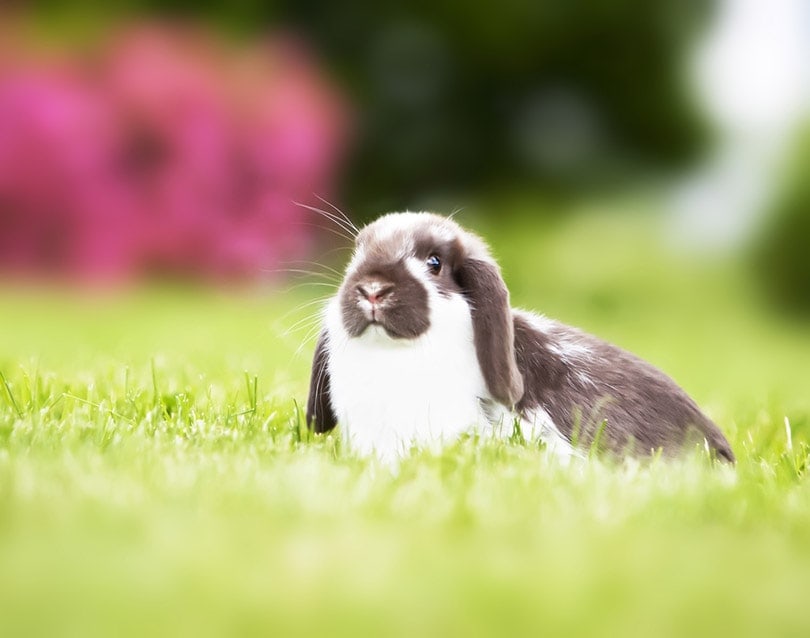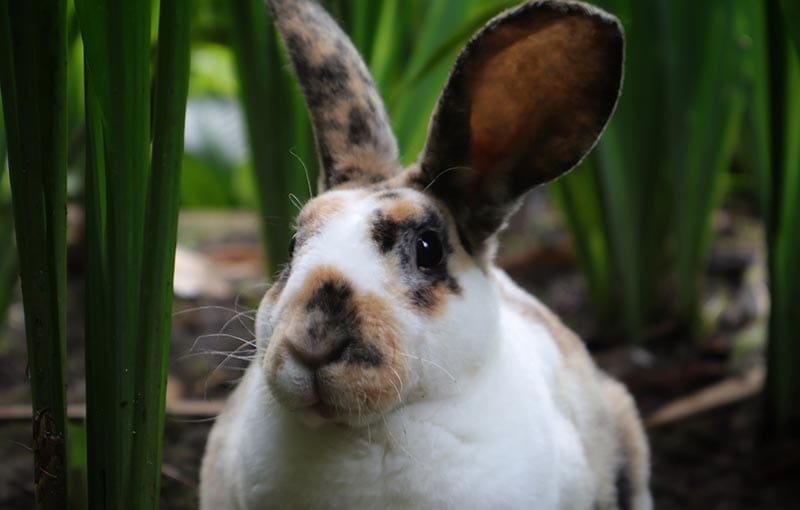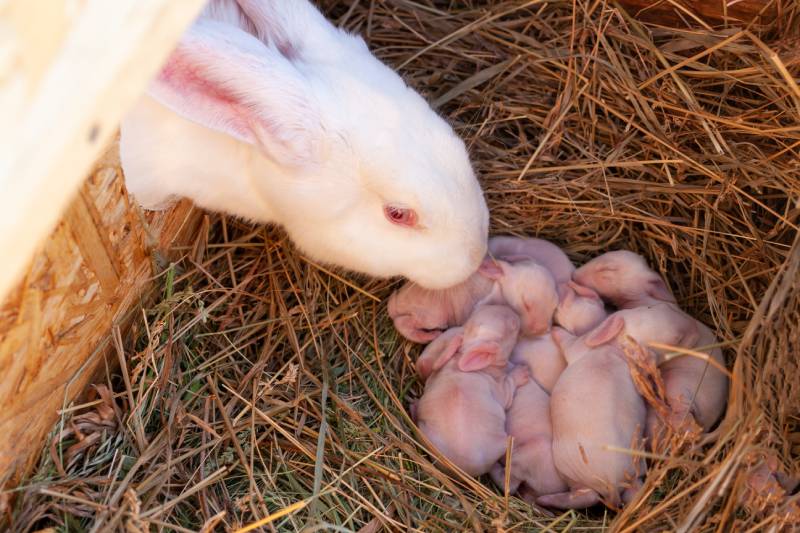Holland Lop Rabbit: Info, Care, Diet, Pictures & More

Updated on
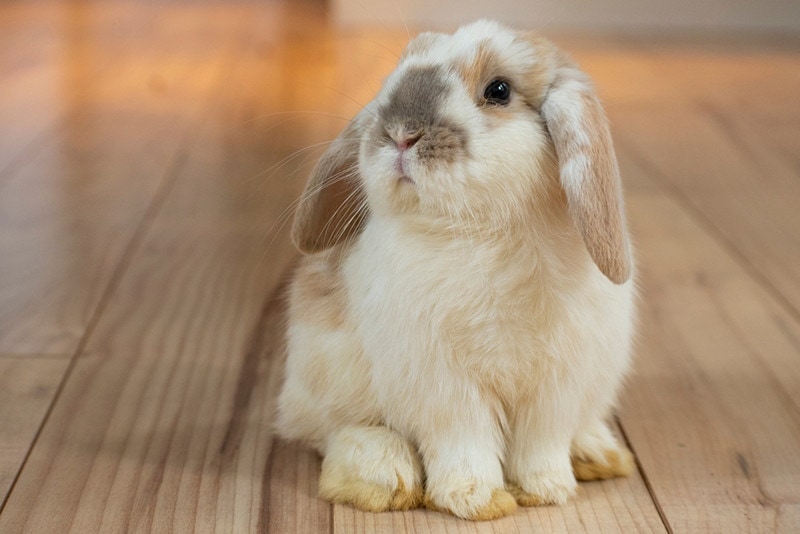
Holland Lops are the smallest lop-eared rabbit breed and an incredibly popular breed across the US and UK. Known for being affectionate and friendly, these rabbits make great pets for first-time owners and experienced owners alike. It’s also a “fancy” breed with signature floppy ears and a compact, muscular body.
Despite being an easygoing rabbit for new owners, a lot of responsibility comes with owning a Holland Lop. Here’s everything you need to know about bringing home a Holland Lop.
| Size: | Miniature |
| Weight: | Up to 4 lbs |
| Lifespan: | 7–10 years |
| Similar Breeds: | French and English Lop, Netherland Dwarf |
| Suitable for: | Beginner to experienced keepers |
| Temperament: | Easygoing, low maintenance, sociable, intelligent, curious |
Holland Lops are one of the most popular rabbit breeds in the US and UK. They were developed by Adrian de Cock beginning in 1949 as a “happy medium” between the oversized French Lop and the undersized Netherland Dwarf. After many trials, these rabbits were recognized by Dutch breeders and authorities in 1964.
There are many varieties of the Holland Lop, including black, tortoiseshell, chocolate, lilac, blue, chestnut, and frosty. They can have many fur patterns as well, such as broken color, solid, tri-colored, and tortoise. Albino Holland Lops and a dark orange variation are also possible.
Holland Lop Characteristics
How Much Do These Rabbits Cost?
The Holland Lop rabbit is a relatively inexpensive pet, like other rabbits. You can find Lops between $20 and $400, with the higher end of the range usually reserved for show-quality rabbits from champion lines and reputable breeders. That said, some breeders just attach a high price tag to an animal that doesn’t necessarily command that price, so do your research.
You may find Holland Lops in rescues or shelters as well. Generally, you’ll have a low-cost adoption fee that includes spaying or neutering and basic veterinary care.
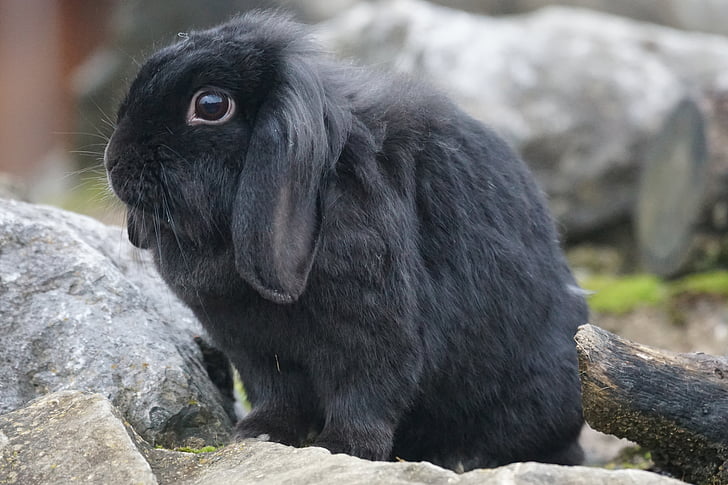
Temperament & Intelligence of the Holland Lop
Do These Rabbits Make Good Pets? 👪
Holland Lops are calm, sociable rabbits that enjoy spending time with their owners. They’re not overly nippy or skittish, so they’re ideal for new owners and families with children. Keep in mind that rabbits are prey animals, however, and tend to be skittish in general. Young children who are loud or move too quickly are likely to scare a rabbit, no matter the breed, so always supervise interactions.
Does This Rabbit Get Along With Other Pets?
Holland Lops are social rabbits and do well with other companion rabbits, but it’s best to stick to other Holland Lops for compatibility. Make sure all animals are spayed and neutered to avoid behavioral issues associated with sex hormones and accidental breeding. Cats and dogs are not a good match for rabbits, as both can be considered predators that may chase, injure, or even kill a rabbit. If you keep a rabbit in a home with a dog or cat, make sure they’re in a secure enclosure, preferably in a closed room that the dog or cat can’t enter and is never allowed to interact with other pets.
 Things to Know When Owning a Holland Lop
Things to Know When Owning a Holland Lop
Food & Diet Requirements 🥕
Holland Lops, like other rabbits, have unique digestive systems. They have bacteria in the cecum, a part of the digestive system, that can derive nutrients from fibrous materials. As babies, Holland Lops need protein sources like wheat bran, milk, linseed meal, oats, and pasture grasses. As adults, they should have a diet with primarily high-fiber feeds like Timothy hay and straw, succulent feeds like green, leafy vegetables, and a commercial blend of pellets or grains to supplement. Some rabbits may benefit from a mineral block to get extra minerals.
Habitat & Hutch Requirements 🏠
Holland Lops are miniature rabbits, but they still need plenty of space to move and hop around. Their cage should be at least 180 square inches at the base with a height of 15 to 35 inches. Ideally, your rabbit’s head should not touch the roof of the hutch if they’re hopping or sitting upright. Holland Lops are big chewers, so it’s better to get a wire mesh hutch and avoid too much wood that will encourage chewing. Make sure the hutch has plenty of space for hiding spots, water, a litter box, food dishes, and toys.
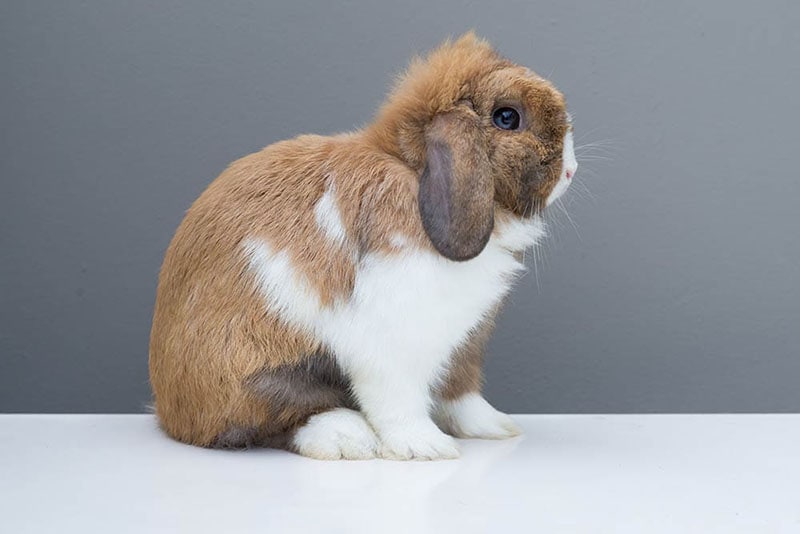
Exercise & Sleeping Needs 🐇
Like other rabbits, the Holland Lop sleeps a lot, but they need plenty of playtime and exercise to stay happy and healthy. Plan to offer at least an hour of playtime outside of the cage every day, more if possible. Having a pair of Holland Lops or a larger colony will help your rabbits get the social interactions they need as well.
Training 🥎
Holland Lops are generally agreeable rabbits and are easy to train to the litter box and basic commands. If you commit to consistent training, you can even train your Lop to perform tricks like sit, stay, and fetch. Because of their size, Holland Lops aren’t ideal for bunny spots like agility. Chewing is a big part of enrichment for Holland Lops. Make sure to provide plenty of chew toys to discourage destructive chewing and minimize conflict between Lops in the same colony.
Grooming ✂️
Holland Lops are easy to care for. They require brushing at least once a week to prevent matted hair. They should also have their nails clipped at least once a month, and you can offer scratch boards in between to keep their nails from overgrowing. Holland Lops do groom themselves, which can lead to hairballs. Holland Lops don’t enjoy bathing, however, so make sure to keep the enclosure clean and rely on self-grooming and regular brushing.
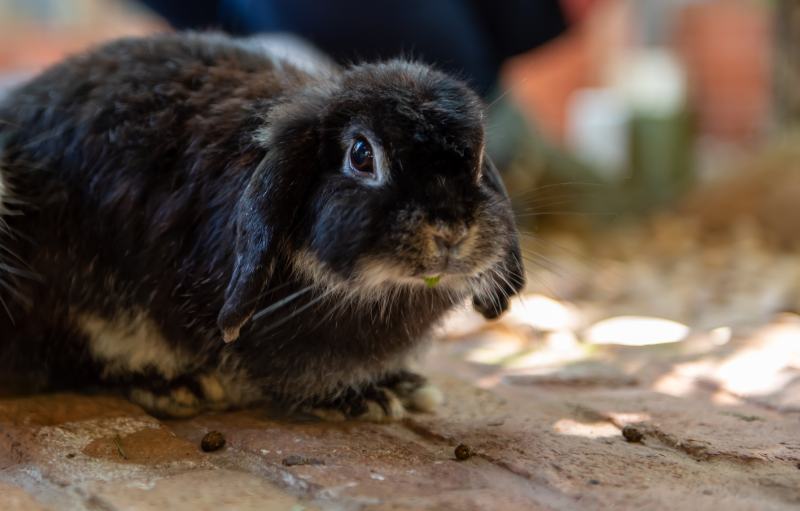
Lifespan and Health Conditions 🏥
The Holland Lop can live for 7 to 10 years, if not longer, and isn’t susceptible to many genetic conditions. Like other rabbits, Holland Lops can suffer from parasite infestation, intestinal blockages, and ear issues. Without the proper diet, your Holland Lop can have dental disease and tooth abscesses that can be painful.
- Skin issues
- Ear problems
- Dental disease
- Enteritis
- Gut stasis
- Bloat
- Parasite infestation
- Tooth abscesses
Male vs Female
Anecdotal evidence suggests that male Holland Lop rabbits are nippier than females and that females are shyer, but there’s not much evidence to support this. Choosing a male or female rabbit mostly comes down to your preferences, especially if you get your rabbit spayed or neutered. This can prevent a lot of behavioral issues and prevent certain health conditions.
The 3 Little-Known Facts About Holland Lop
1. The Holland Lop Is the Smallest of All Lop Breeds
Weighing between two and four pounds, the Holland Lop is the smallest of all lop-eared rabbit breeds. They’re muscular and compact but tend to be short in length and height.
2. The Holland Lop Was Bred as an In-Between of the French Lop and Netherland Dwarf
Holland Lop comes from the French Lop and the Netherland Dwarf. Adrian de Cock, a rabbit breeder from the Netherlands, chose to breed the Holland Lop to get an optimal rabbit size. The breeding process ended up with extremely oversized rabbits that died, and he had to start over to get viable babies, then breed again to get the lop-eared trait, which came from breeding the litters with the English Lop.
3. Holland Lops Have Different Feet Sizes
Holland Lops come in different color variations, but you can also choose from six different types of feet! Along with the average size, Holland Lops with narrow hindquarters are compact with feet that are close together, pinched hindquarters put their wide feet in a V shape, and a combination of the two with a narrow build. There’s also thin bone, which is a leaner version of the Holland Lop, and thin, long bone, which has feet that are longer than they are thick.
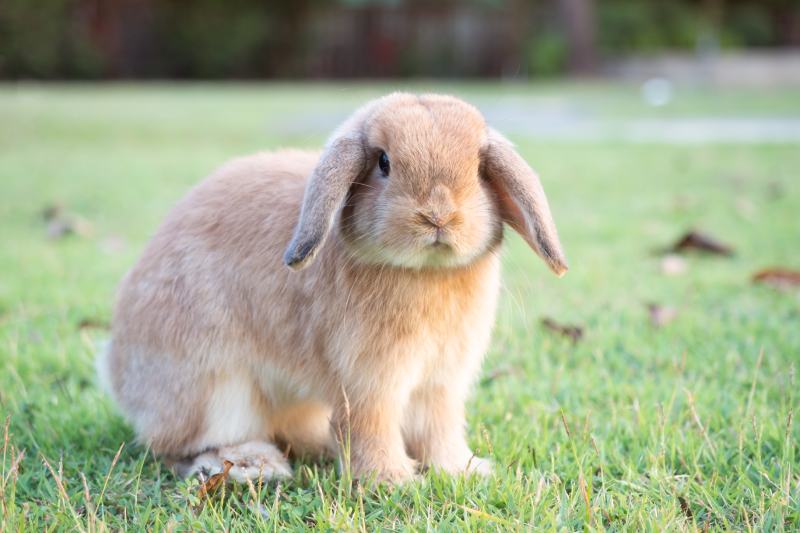
Final Thoughts
Holland Lops make excellent pets, but they still require a large hutch, plenty of exercise, and lots of chew toys to stay happy. They do well in homes of all kinds as long as their needs are met, so make sure you have the space and time to bring one of these adorable bunnies home. Ideally, Holland Lops should be kept with other Holland Lops to have companionship when they’re not spending time with you.
Featured Image Credit to: Cristina Coneffer, Shutterstock


